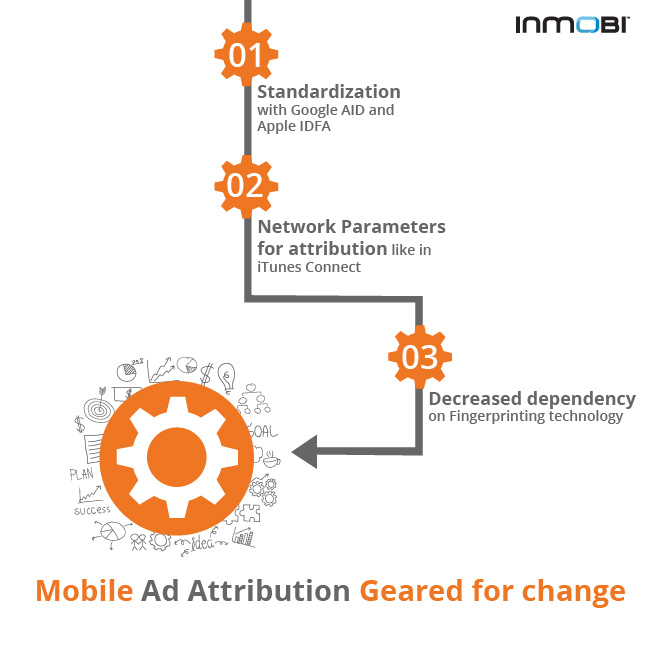Fuel campaign performance with laser-focused targeting

The world of mobile ad attribution is changing rapidly. From custom solutions offered by mobile ad platforms to independent solutions offered by pure mobile ad attribution players, and in more recent times changes introduced by Google, the world of mobile ad attribution has never been short on options and excitement. We help make sense of major changes in the attribution landscape.

Shift Towards ID Standardization
Apple IDFA has been in existence for a while and Google announced its new Advertising ID (AID) last year. Google’s notification on use of AID states that “... beginning August 1st 2014, all updates and new apps uploaded to the Play Store must use the advertising ID (when available on a device) in lieu of any other device identifiers for any advertising purposes.”
Most conversion trackers are updating their SDKs to collect AIDs in order to ensure a smooth transition to the new standard in Android device IDs. Advertisers, in turn, are also upgrading to the latest SDKs. Doing this sooner than later is imperative, as analytics SDKs can ensure that new standard IDs are matched correctly with existing user data, avoiding over-attribution later. Naturally, advertisers would be keen on avoiding a situation where there is a sudden spike in the number of acquisitions. If you’re an Android advertiser on InMobi Analytics - I hope you haven’t been waiting. Just in case you have,upgrade today!
Entry of new information parameters and sources
Leading the charge is Apple’s iTunes Connect. Developers get tons of perks, including the ability to track acquisition, engagement and retention metrics, for starters. Installs can be tracked using a Provider and Campaign ID. With no SDK changes or updates to the app required, this is an elegant and simple solution for attribution.
Most conversion trackers, including InMobi Analytics, are eagerly awaiting the APIs in order to start attribution, pronto! However, the importance of third-party conversion tracking cannot be understated, because of the ability of trackers to post-back conversions to networks.
Improvements in device fingerprinting
A device fingerprint is a probabilistic composite ID, typically generated by combining several device attributes. Conversion matches are determined by anonymously matching generated fingerprints at install and click time.
Device Fingerprinting is fraught with some issues - the most pertinent being the challenge of using fingerprinting at the right time. Using fingerprinting at the wrong time inevitably leads to a large number of false positives or negatives, affecting the accuracy of the method. Moreover, the technology varies amongst trackers, leading to the absence of a standardized way of measurement when device identifiers are not present. Many conversion trackers are working towards improving the accuracy of fingerprinting technology. The need of the hour is a standardized solution that offers predictability across trackers.
InMobi is working on understanding fingerprint behaviour to help standardize the method in cases where device identifiers are either not available, or are of lower confidence in terms of accuracy.
What remains clear in the midst of several changes, is the ever-increasing importance of attribution itself - to allow accurate revenue predictability and ad-network optimization for advertisers. In the face of the attribution duopoly exhibited by large players, the role of niche third party attribution technology is set to move towards enabling efficient ad optimization and easy integration of ad-serving products and services through independent, unbiased attribution for advertisers.
Register to our blog updates newsletter to receive the latest content in your inbox.